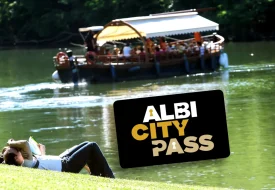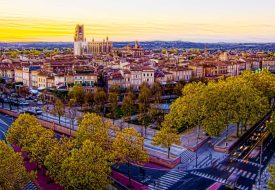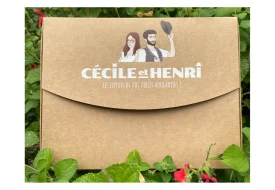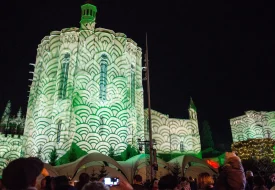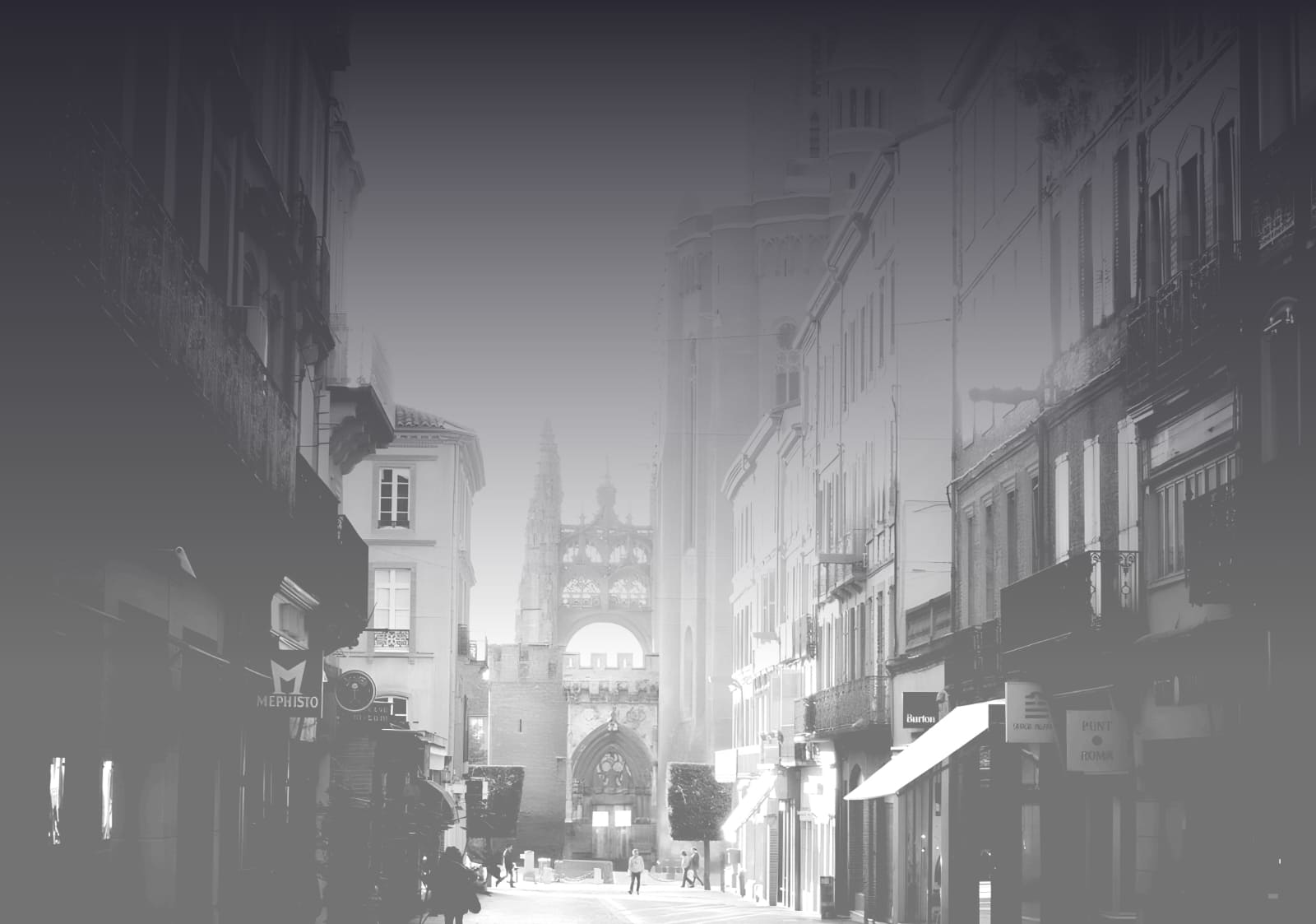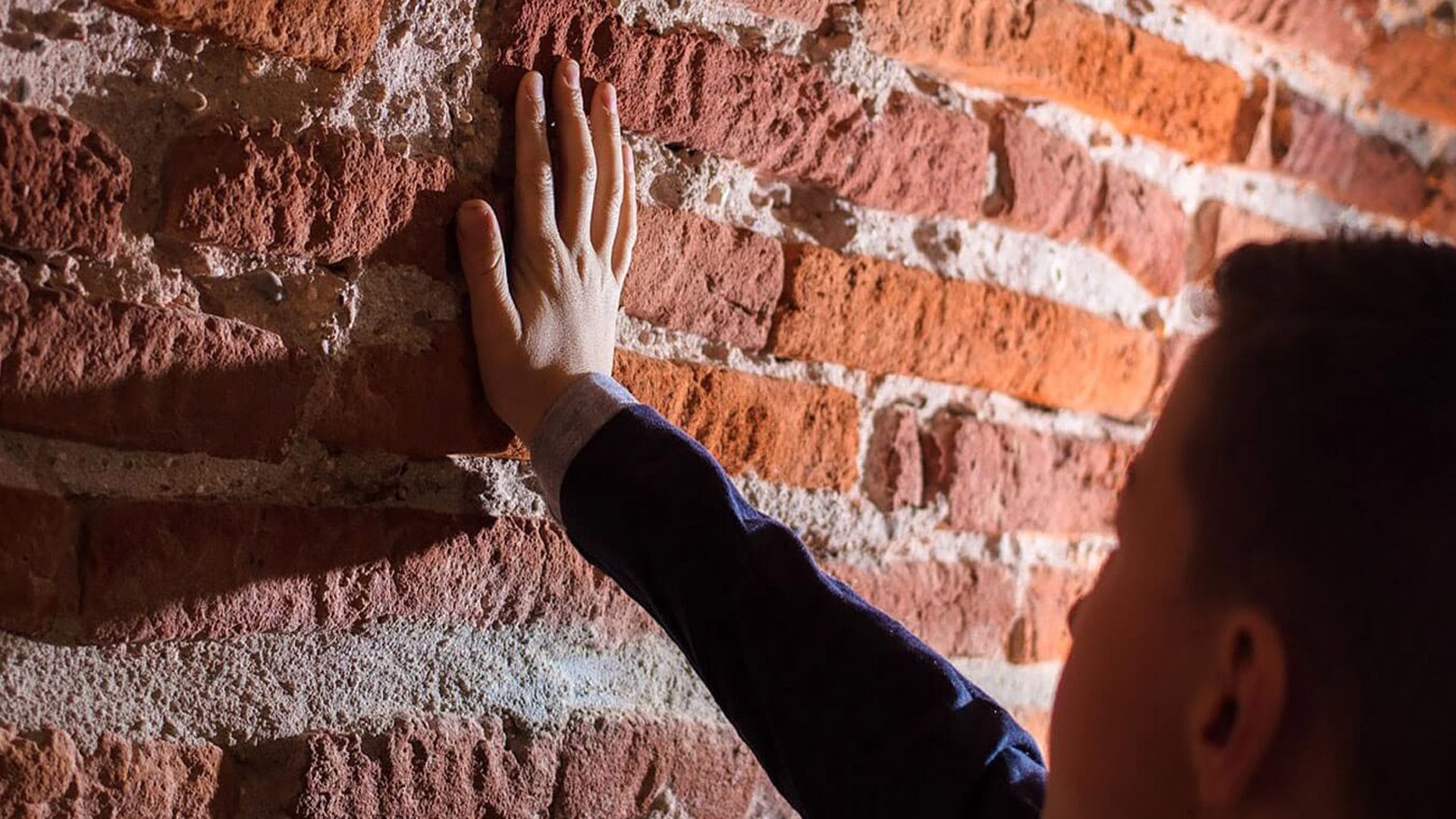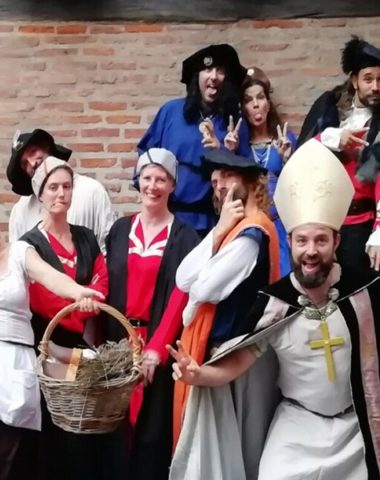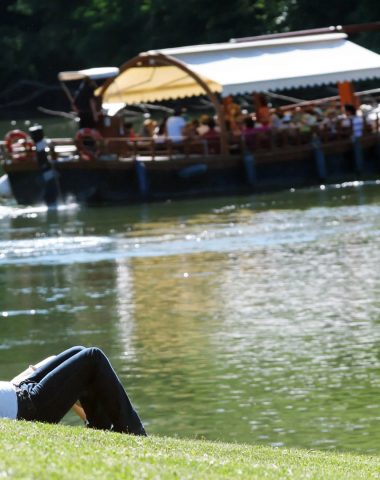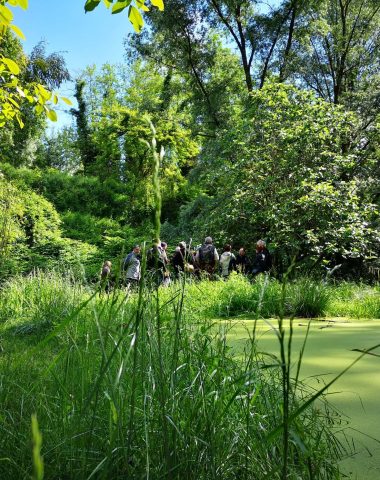Old Alby is a labyrinth where you must not forget to stroll, look up and be curious... Visiting Albi as a family becomes a game and a pleasure.
Why is Albi mainly built of brick?
Carried by the Tarn since the Rougiers from southern Aveyron, this earth was, from Roman times, the material of choice (ease of extraction, inexhaustible source) for construction. Moreover, if you observe the river on a rainy day, the waters are red! Shaped by hand, the bricks still bear the imprints of the workers...
Go in search of fingerprints, you will discover that even the children put their hands in the dough!
In the Middle Ages, city dwellers were very smart and always ready to save money. Indeed, as the taxes were calculated on the habitable surface on the ground of the houses, the builders "nibbled" space on the street with the floors. Individuals were also taxable on the number of windows. Also, it happened that these were filled in before the passage of the "quaestor".
Like a "roof" over the streets, the terraces occupying the top floor of the houses are called “sunhoo”. These open spaces were used to dry crops, hoisted by pulleys still visible. Some houses have retained a tower, a symbol of their wealth
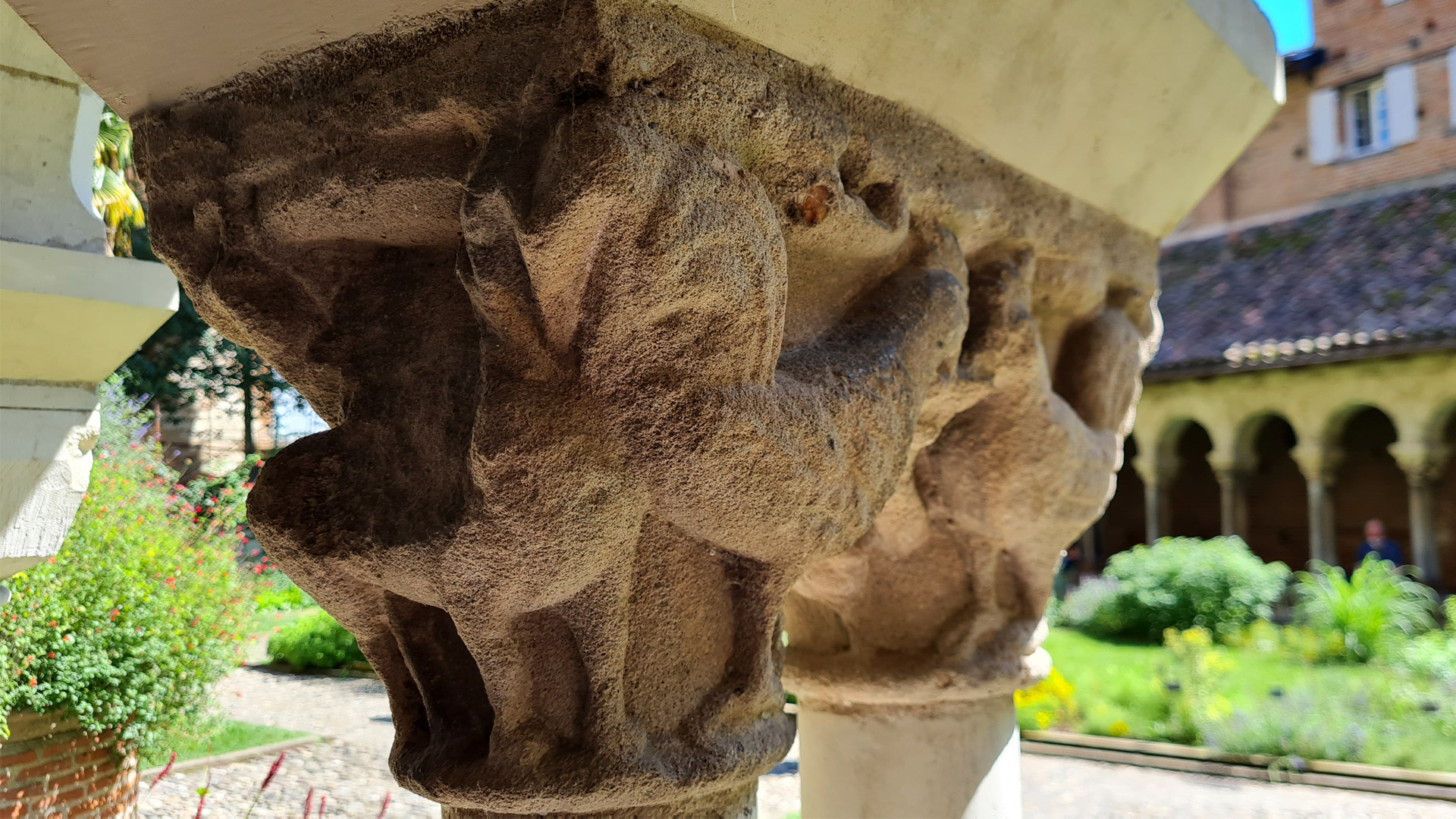
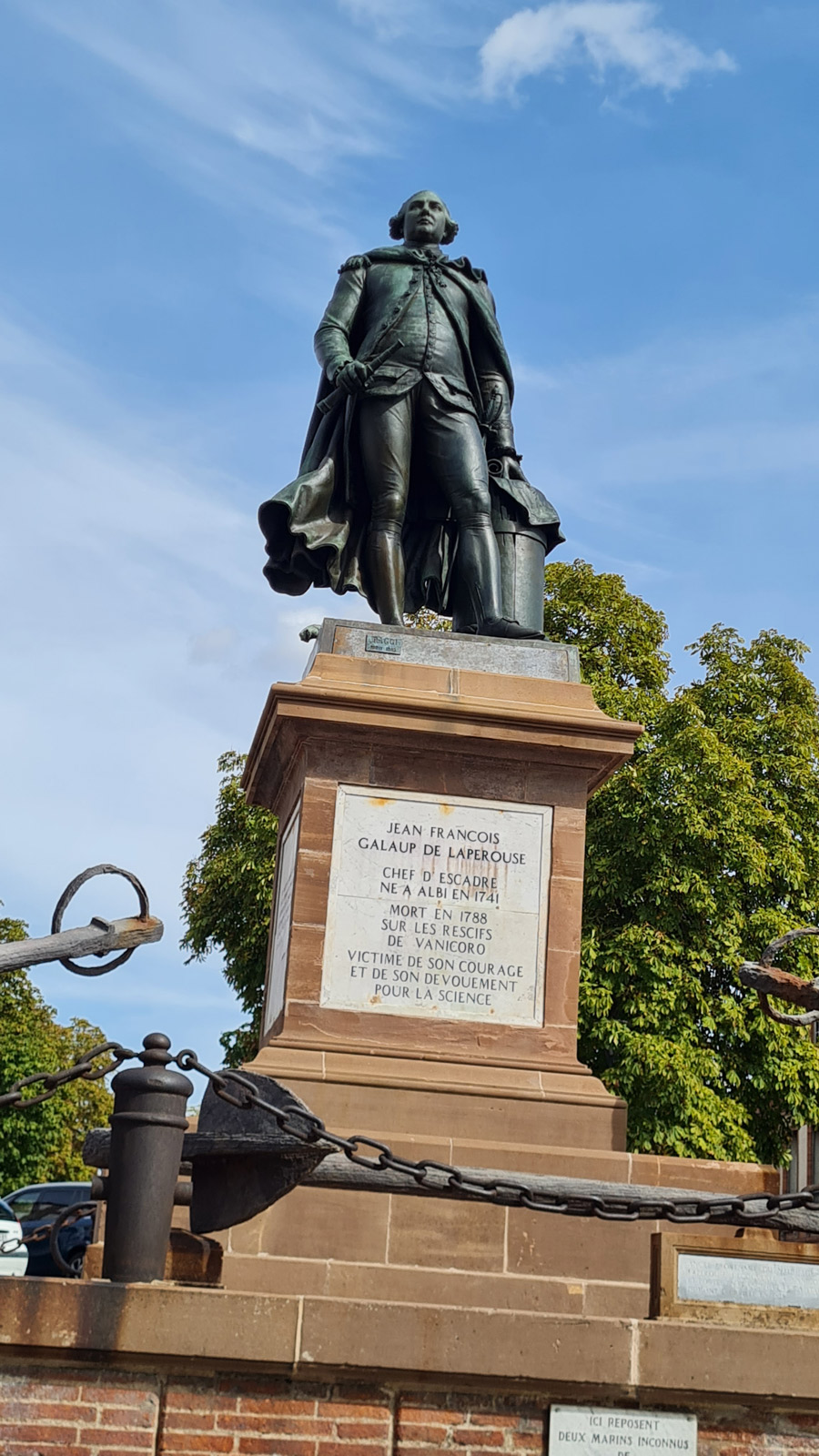
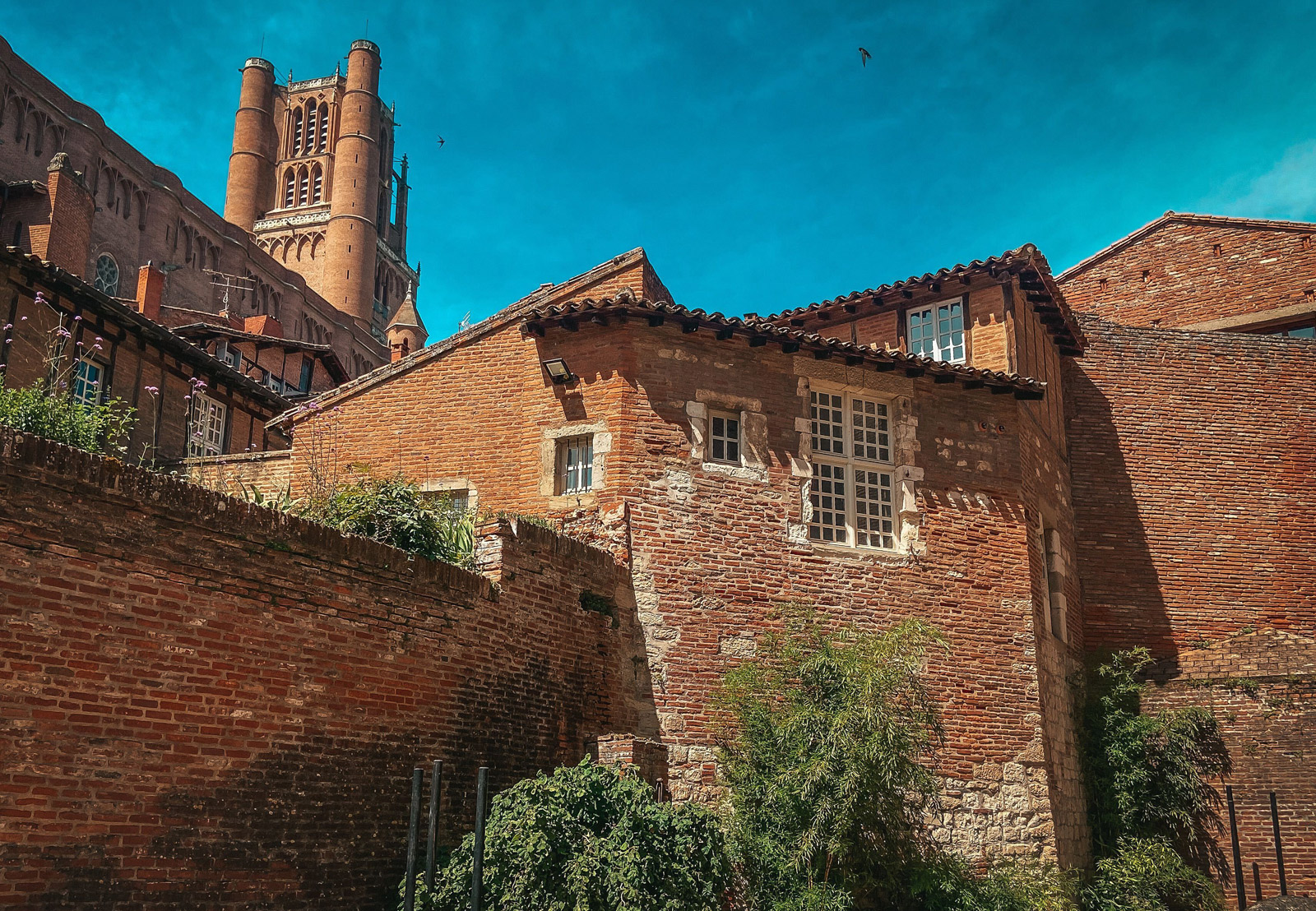
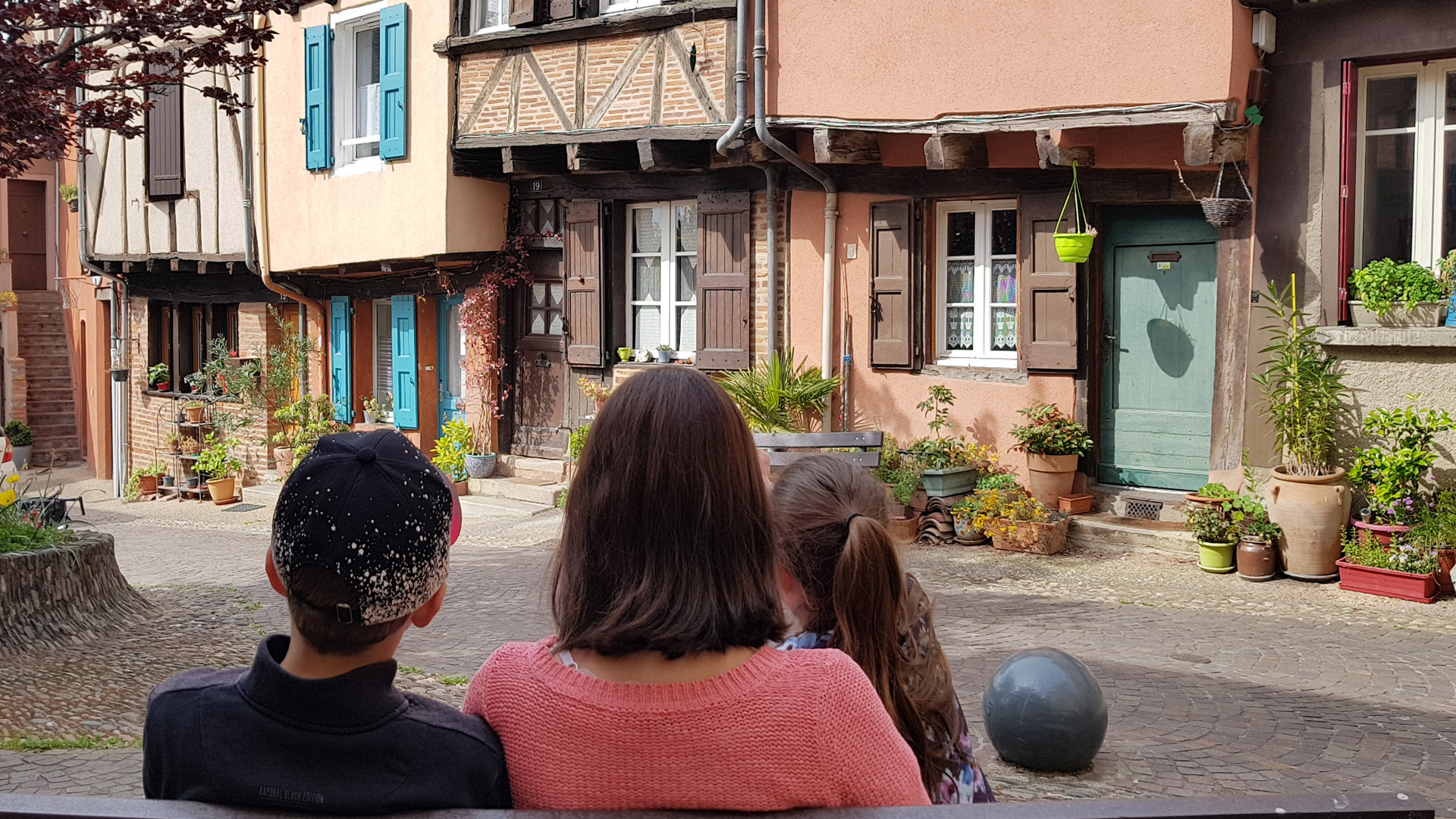
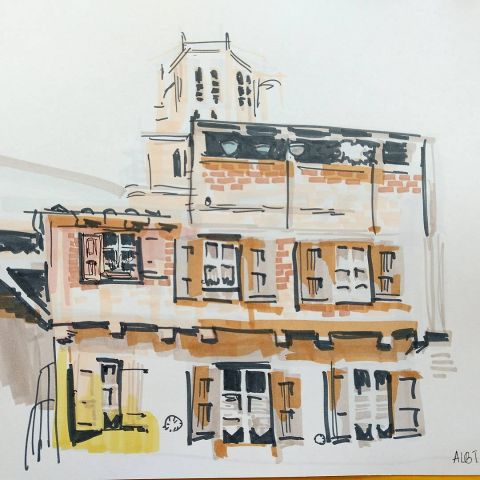
Sainte-Cécile cathedral: surprising, that's for sure, but above all giant!
It was Bishop Bernard de Castanet who wanted it built in 1282 but the work having lasted 200 years, he did not see it finished.
This cathedral resembles a fortress pierced with high and fine openings. His style is called Southern Gothic, a severe style. Later it was added the Canopy, which represents the main entrance to the cathedral: it is in the style flamboyant gothic, richly carved in stone, it looks like “stone lace”.
Let's go in and, amazement, everything is painted and decorated!! Quite the opposite from the outside.
La nef is one of the highest in France: 30 m under the vault and 97 m long and 19,20 wide, imposing isn't it? These are Italian painters of the Renaissance who have painted walls and ceilings. 3 years simply to paint the vault, they worked on boards suspended from the ceiling.
Looking attentively towards the vault, we perceive the holes which let the ropes which held the scaffolding pass.
The large painting that looks like a funny comic strip: this is the Last judgement – It tells of hell and paradise. At the lowest, the punishments given to those who have committed the 7 deadly sins. We can only be attracted by the monsters represented.
On the contrary it is the Jube: it is a closed choir where religious gathered for offices and masses. We find the same stone lace as on the outside. All around, there is a corridor called the ambulatory where we discover stone statues which represent as many characters from the bible as people from the Middle Ages dressed in period clothes and respecting the size of the people of the time. . Take a good look at all the details of the faces, the hands, the folds of the dresses which are very realistic.
The traces of the very first cathedral which was a little further away…
Our Famous People
The Toulouse-Lautrec museum: a visit to accompany parents
Le Toulouse-Lautrec museum from Albi is known all over the world, you have to enter le Berbie Palace, former residence of the bishops to visit it. And while browsing this magnificent “castle”, the works of this painter born in Albi, Henri de Toulouse-Lautrec, find their place. In 2022, it has been 100 years since the family donated the painter's works.
This painter is famous for his portraits and especially for his posters which bear witness to Parisian life at the end of the XNUMXth century. He is considered the precursor of the XNUMXth century poster. These are advertisements, announcements of shows, of events.
The museum has a collection ofe 21 posters produced using the technique of lithography. As the rooms progress, we will be able to see horses, dogs, portraits. Leaving the rooms of the museum, take a look at the showcases where objects from the history of Albi are exhibited, keys, pennies, pottery, a leather sandal, etc.
The story of François de Galaup de Lapérouse, a great XNUMXth century navigator born in Albi.
His life was filled with expeditions to the four corners of the world with fabulous crews to discover new lands… the Astrolabe and the Compass. Unfortunately left on 1er August 1785 from Brest, he never returned there. Indeed the two frigates were damaged in 1788 off the coast of Australia and he lost his life there with all his crew. Much research has been done since to find the remains and that a museum is dedicated to him in my hometown : Albi – During the visit, ask for the booklet the Lapérouse mystery...
clever vocabulary...
- Canopy : more or less imposing sculpted porch located in front of an entrance above statues.
- Berbie : comes from the Occitan “Bisbia” which means bishop.
- Blazon : symbol of a city or a family.
- Cathedral: comes from “cathedra”: seat of the bishop.
- Choir : sacred part of the cathedral where the canons met.
- Cathars : messengers of a new belief which was successful in the XNUMXth century.
- Crusade against the Albigenses : war started by the Catholic Church from 1209 to 1229 against the Cathars.
- Donjon : defensive tower.
- Sketch : sketch.
- Bishop : religious leader of a region.
- Strike or gashole : a watchtower or control tower.
- Gargoyle : monster figure at the top of the cathedral which served as a gutter.
- Jube: sculpted barrier separating the nave from the choir in a church.
- Last judgement : the Catholic Church believes that God will judge all the living and the resurrected dead at the end of the World.
- Timbered house : house whose facade is made of wood and cob (plaster) or bricks.
- Nave : central part of the cathedral reserved for the people.
- Pastel : tinctorial plant whose blue was used to dye fabrics and to make paints.
- Quaestor : tax collector.
- Rougiers : clay soils.
- Tarn : this river has its source on Mont Lozère 375 km long and flows into the Garonne.
- Vaulted: rounded ceiling



